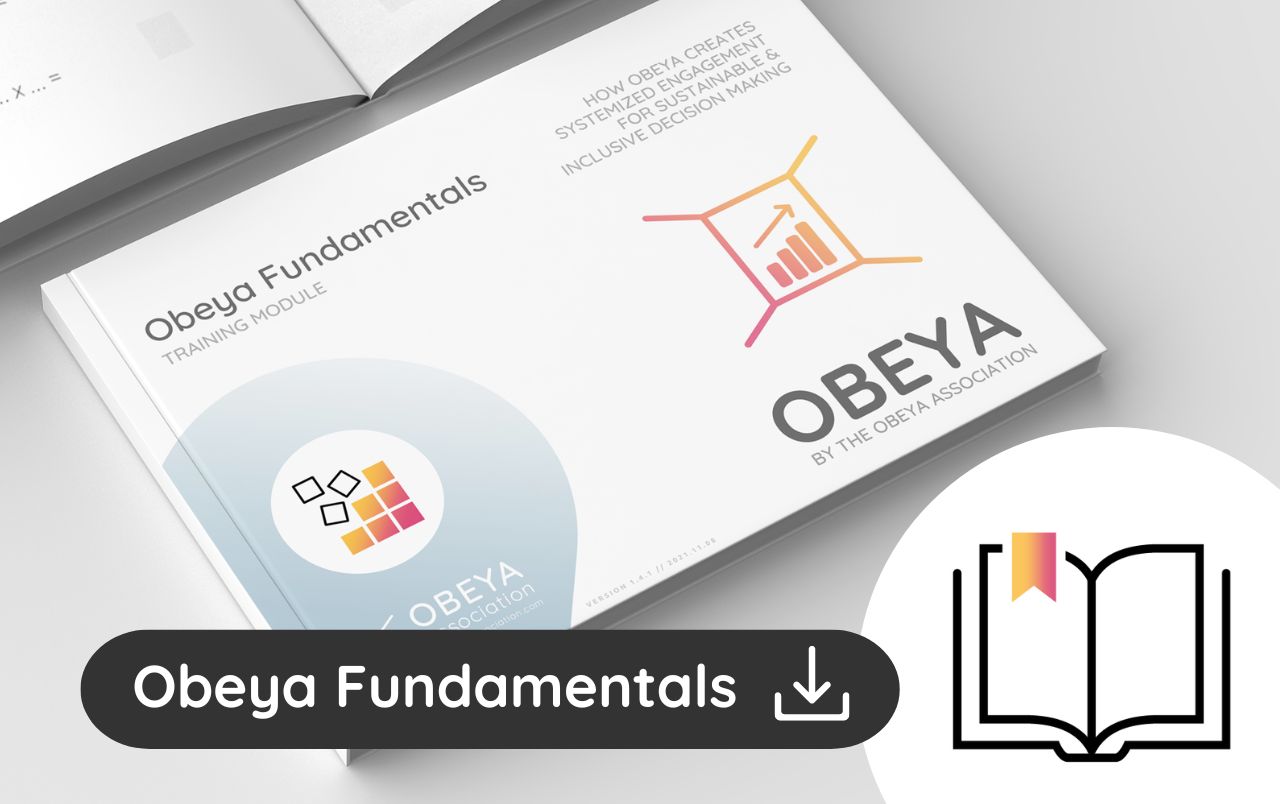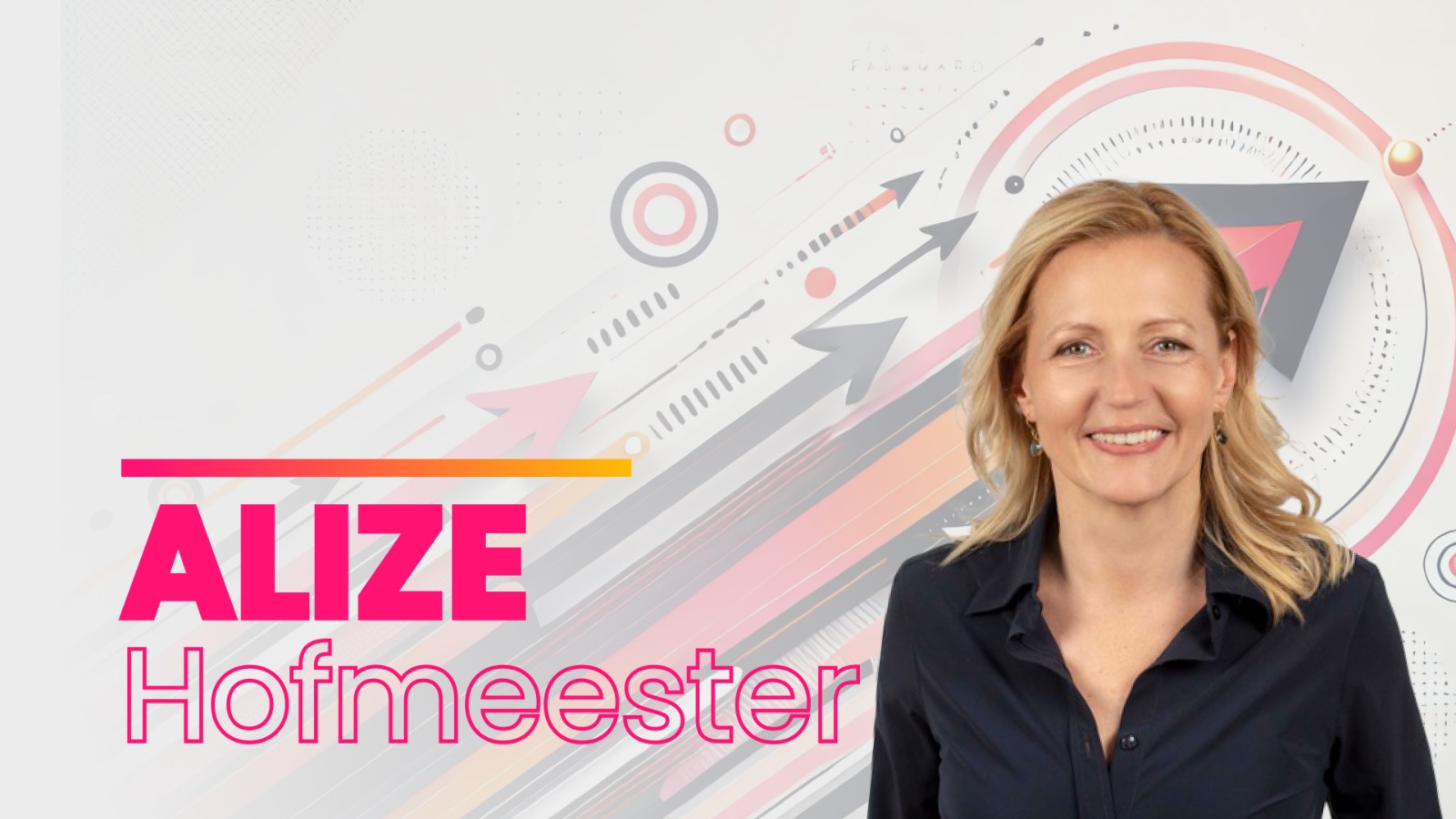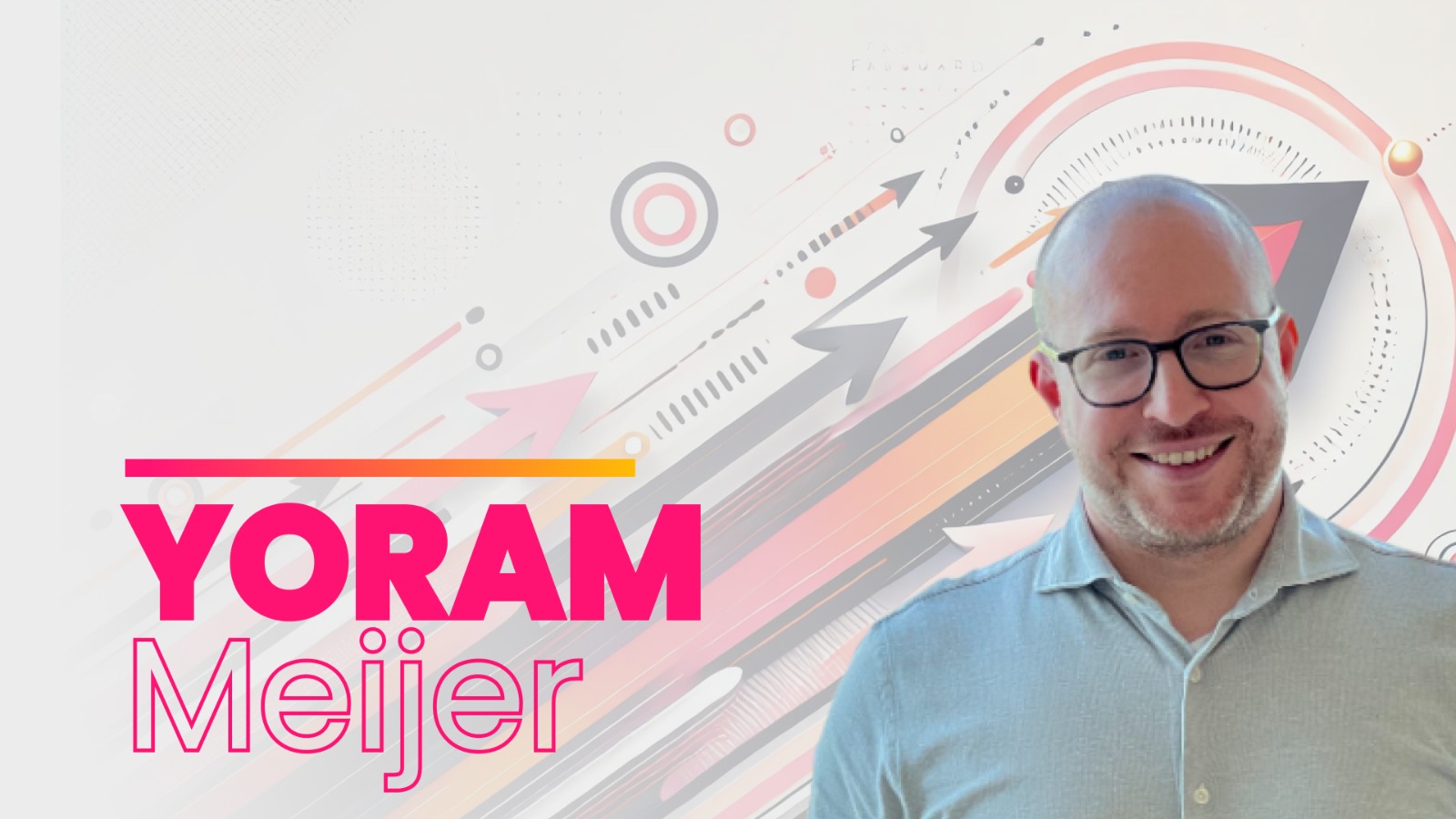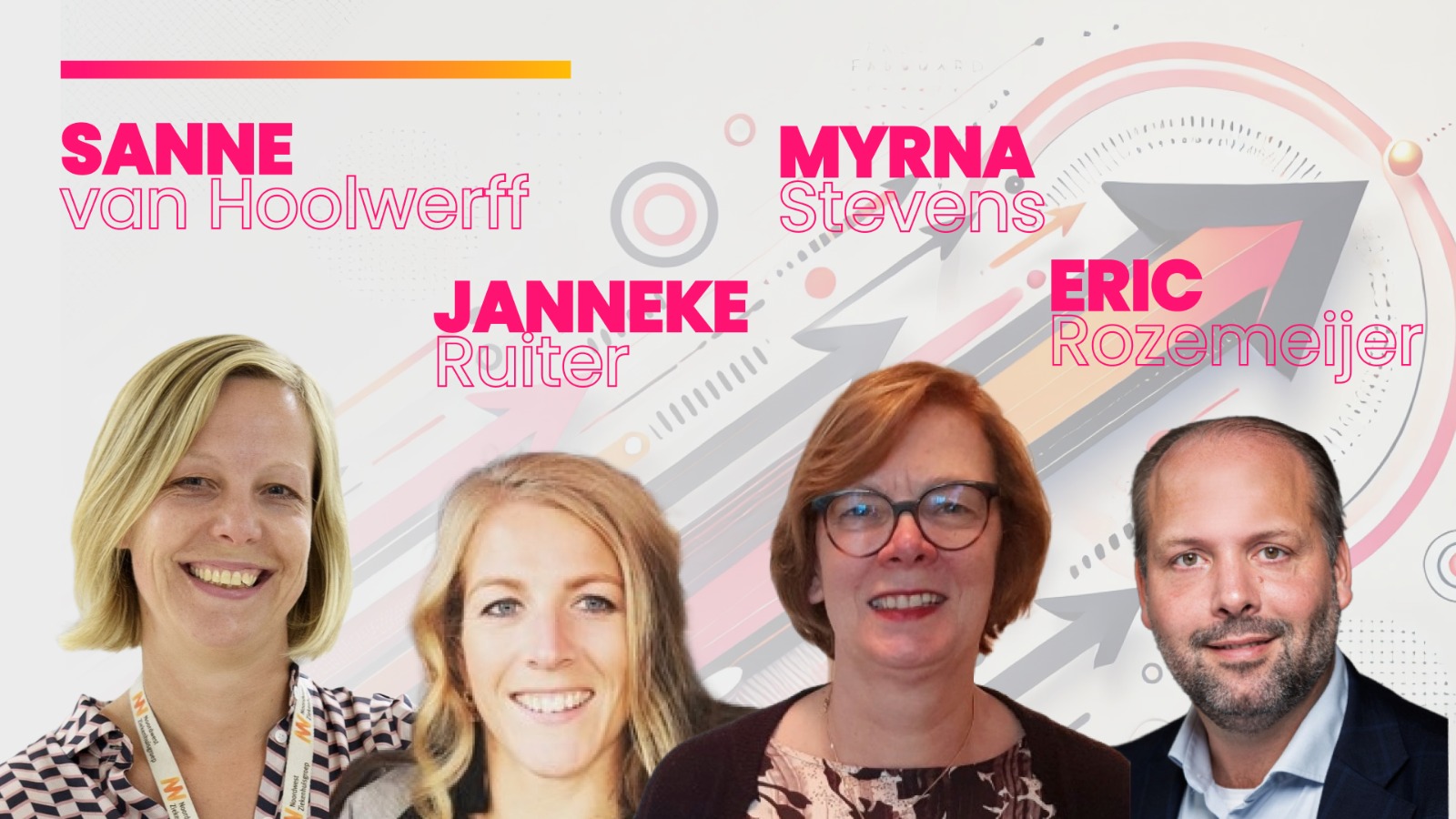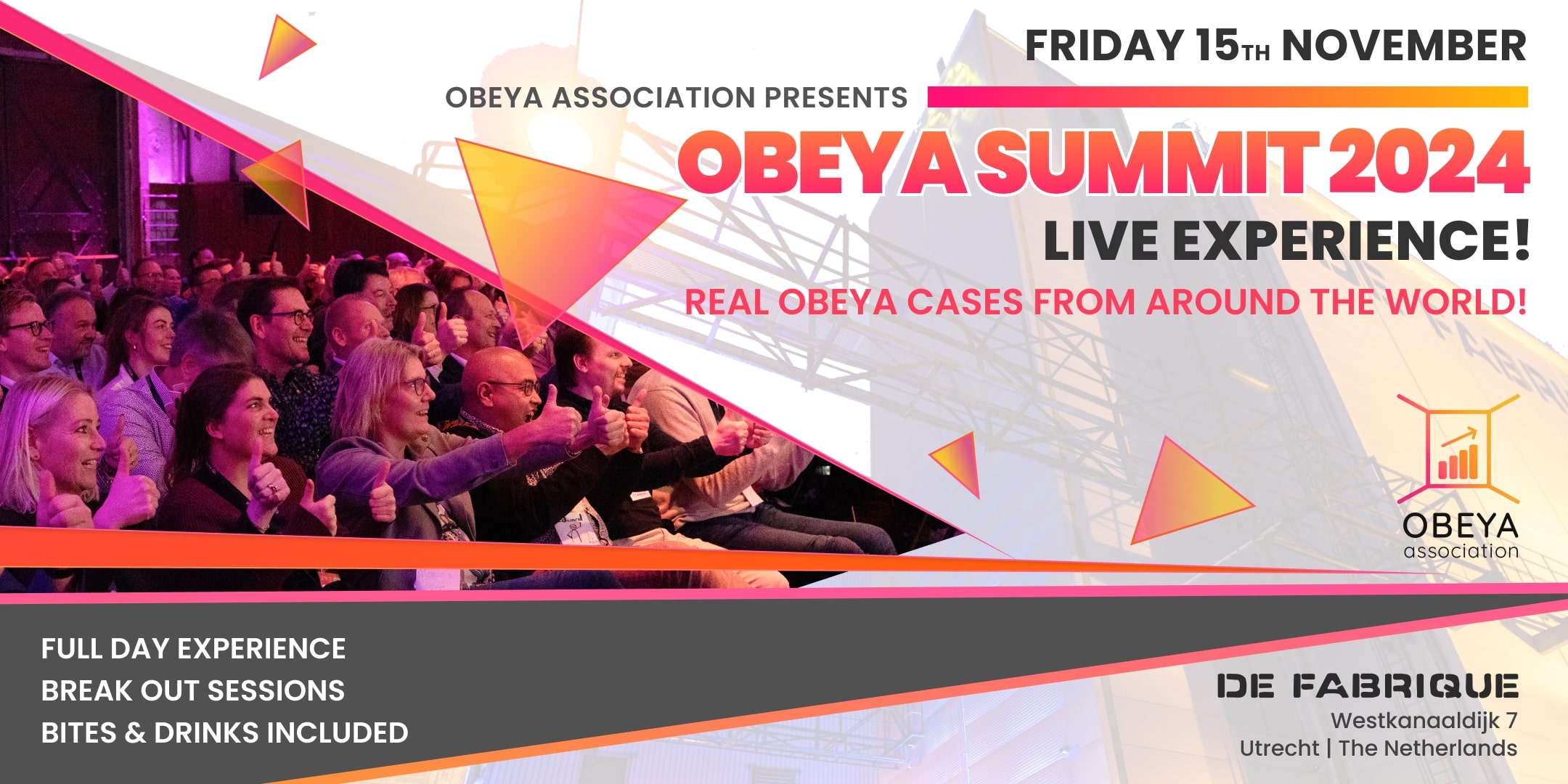
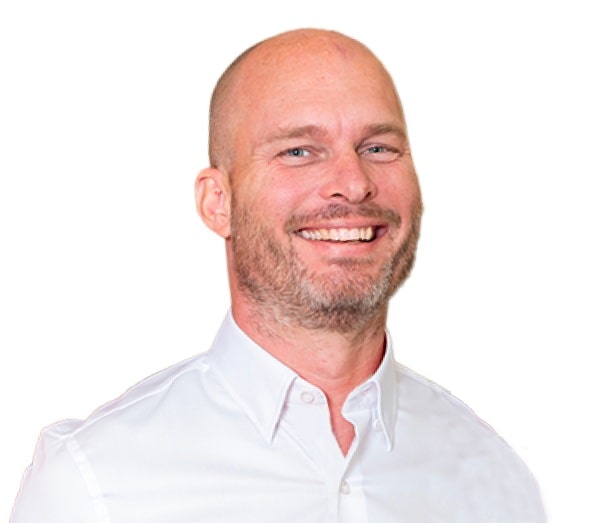
Authors of this article: Eric Rozemeijer & Feiko van der Kolk
Blog update 01-12-2023: We have updated the key insights of this blogas a result of our Obeya Summit 2023 session.
Introduction
Have you ever wondered what makes one Obeya take off like lightning where another struggles from step one? As we see more Obeya´s take shape, we see not only an increase in diversity between Obeya’s, but we also see a diversity in speed of growth and even viability. What causes these differences and what can we learn from them to improve the quality of our work as Obeya Coaches?
We are Feiko van der Kolk and Eric Rozemeijer. We are Obeya Coaches from day one and we are going to change the world using Obeya. We are driven by curiosity and we love our facts! In this paper we share our first research into Obeya Maturity and our key insights. We dove into questions such as: can you assess the ‘maturity’ of an Obeya. And if so, what is the reference framework, how can you measure it, and is it valuable to measure?
In this blog we will take you along on our Obeya maturity journey. During this journey we created an Obeya maturity model, the Obeya maturity scan v1.0 and v2.0, we have all the results of the scans that have been done to date and most important: we will share what we have learned along the way.
The development of the Obeya Maturity Scan
Eric: “The adoption of Obeya practices within organizations rapidly increased over the past years. More and more organizations experience that the effort of setting up an Obeya is well worth it, as a successful Obeya can significantly enhance collaboration, decision-making and overall organizational performance.
But organizations also experience that creating an effective Obeya is a challenging endeavor. It requires strategic thinking, careful planning, visual management skills and ongoing commitment of the team. You will constantly need to attend to and solve the challenges that become transparent in the Obeya.
Over the past years more and more organizations that worked with Obeya, were asking us to provide guidance on how to improve their Obeya ways of working through expert insights and best practices.
What I felt that was missing was an independent and objective framework that could be used to assess the effectiveness of Obeya.
The Obeya Association confirmed our views, and we started the journey to set up the first objective: an independent Obeya Maturity Scan based on our collective knowledge and experience. After a couple of working sessions, we created our first MVP maturity scan at the end of 2023. Check….it was ready to get tested in the market.”
Feiko: “In Q3 2022 I asked the Obeya Association which tools they had available to assess the quality of my work (as an Obeya Coach) and the viability of my work (specifically two Obeya routines & rooms). I wanted to challenge my work, biases and blind spots, using an objective framework and tool.
There were no tools available, so started work on structures and maturity models to create an Obeya Maturity Model as a foundation for the maturity scan. I got the exciting call not long after in which Dolf shared version 1.0 of the maturity scan. I arranged with my client to road-test the scan in two Obeya’s. I couldn’t wait. And now we have collectively used the learnings from version 1.0 to create version 2.0.
The Obeya maturity scan has since been used multiple times. Before we share the results, let’s first have a quick look at how we set up the scan.”
Obeya Maturity Scan Structure
The maturity scan is based on the Obeya Maturity Model. This model defines the maturity levels and key maturity characteristics for each of the eleven principles and their elements and is based on our collective experience.
Using the scan further calibrates the levels and characteristics. The maturity levels are:
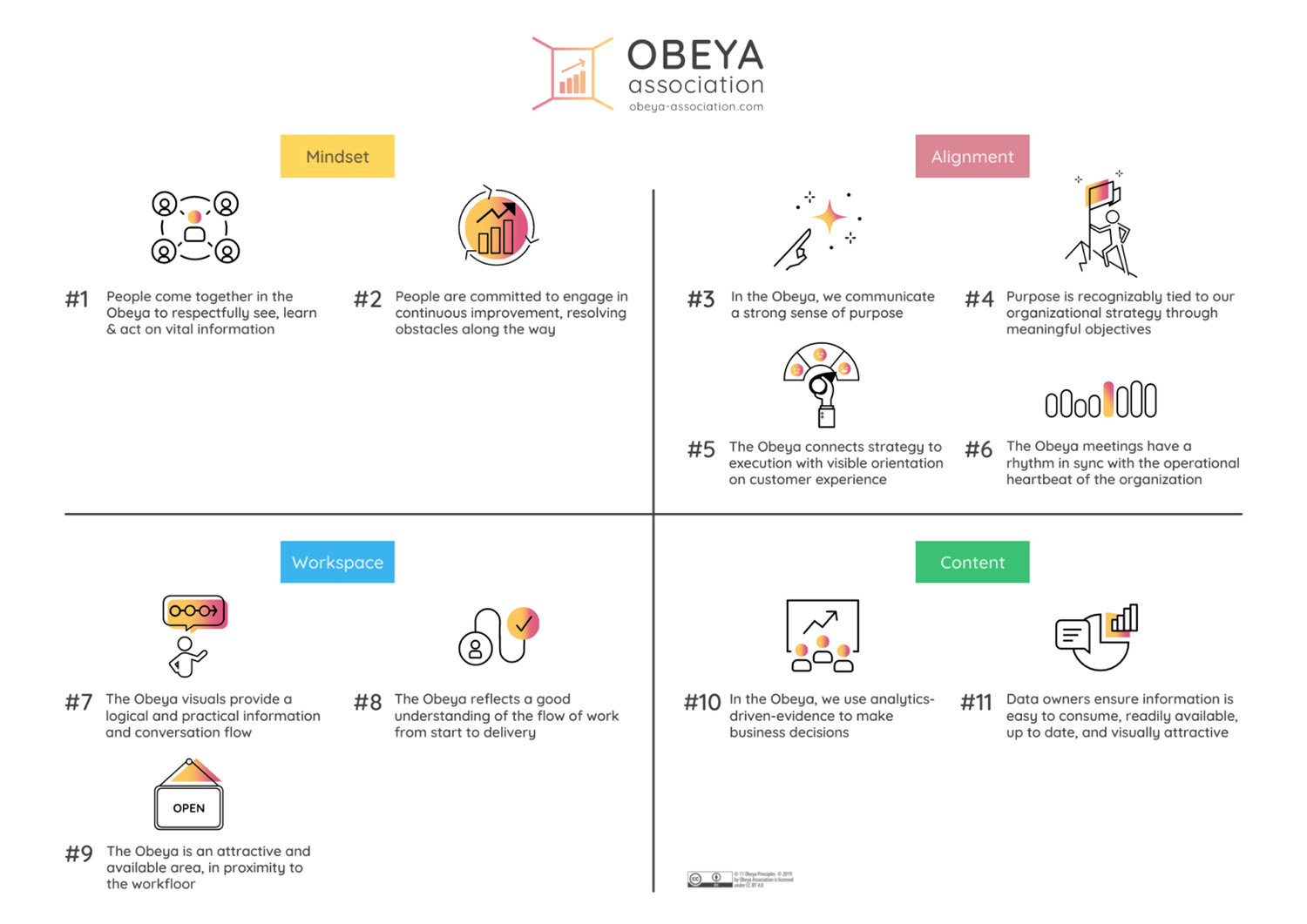
- Intentional / insufficient
Basic preconditions to start working with Obeya are not observed - Initiated
This phase is characterized by focus on the who, why, what and how of Obeya. Focus easily shifts from content to form (how-to) - Formalized
The basic workspace & content are in place and meetings have a discernible structure. Adherence to structure is dominant over value creation - Optimized
The purpose and value of Obeya are leading. Meetings add value and the value of Obeya is continuously optimized. - Embedded – transformative
The philosophy of Obeya is part of the cultural DNA. Obeya’s connect and share look&feel. The benefits of the way of working extend positively to the outside world.
Each of the principles consists of several distinct elements, all of which are plotted against the maturity levels. As an example, Principle #9: “The Obeya is an attractive and available area, in proximity to the workfloor” gets tested on 2 levels:
- “attractive and available” – testing the accessibility and readiness of the actual Obeya room
- “in proximity to the workfloor” – testing its relevance towards the workfloor/gemba
We created a matrix which details the maturity characteristics per maturity level for each of the subdivisions of the 11 Obeya Principles.
Highlights of the scan results
We have gathered the data of the first 7 scans. What can we learn from the data, what jumps out, what do we not yet know?
Average score
The average maturity score across the Obeya’s is 2,5. This means that most of the Obeya’s in scope have clarity on the who, why, what, and how of the Obeya. But the performance dialogue in the Obeya can easily shift from content to form (how-to).
Score per quadrant and principle
Looking at the scores from a quadrant perspective provides an interesting insight: the quadrant that scores the highest is “mindset”, with an average score of 2.8. This is mainly caused by a high average 3.1 score on Principle 1 “People come together in the Obeya to respectfully see, learn & act on vital information”. This is really great to see, because as far as we’re concerned, this is really the core of Obeya.
The quadrant “content” scores lowest, with an average score of 2.2. This is mainly caused by a low average on principle 10 “In the Obeya, we use analytics driven- evidence to make business decisions”. Apparently, decisions-making based on (fact based) data in Obeya is still in the early stages.
Another interesting observation is the relatively high 2.6 score on Principle 6 “The Obeya meetings have a rhythm in sync with the operational heartbeat of the organization”. Good to see that organizations in scope are successfully integrating the Obeya meeting structure within their organizational governance.
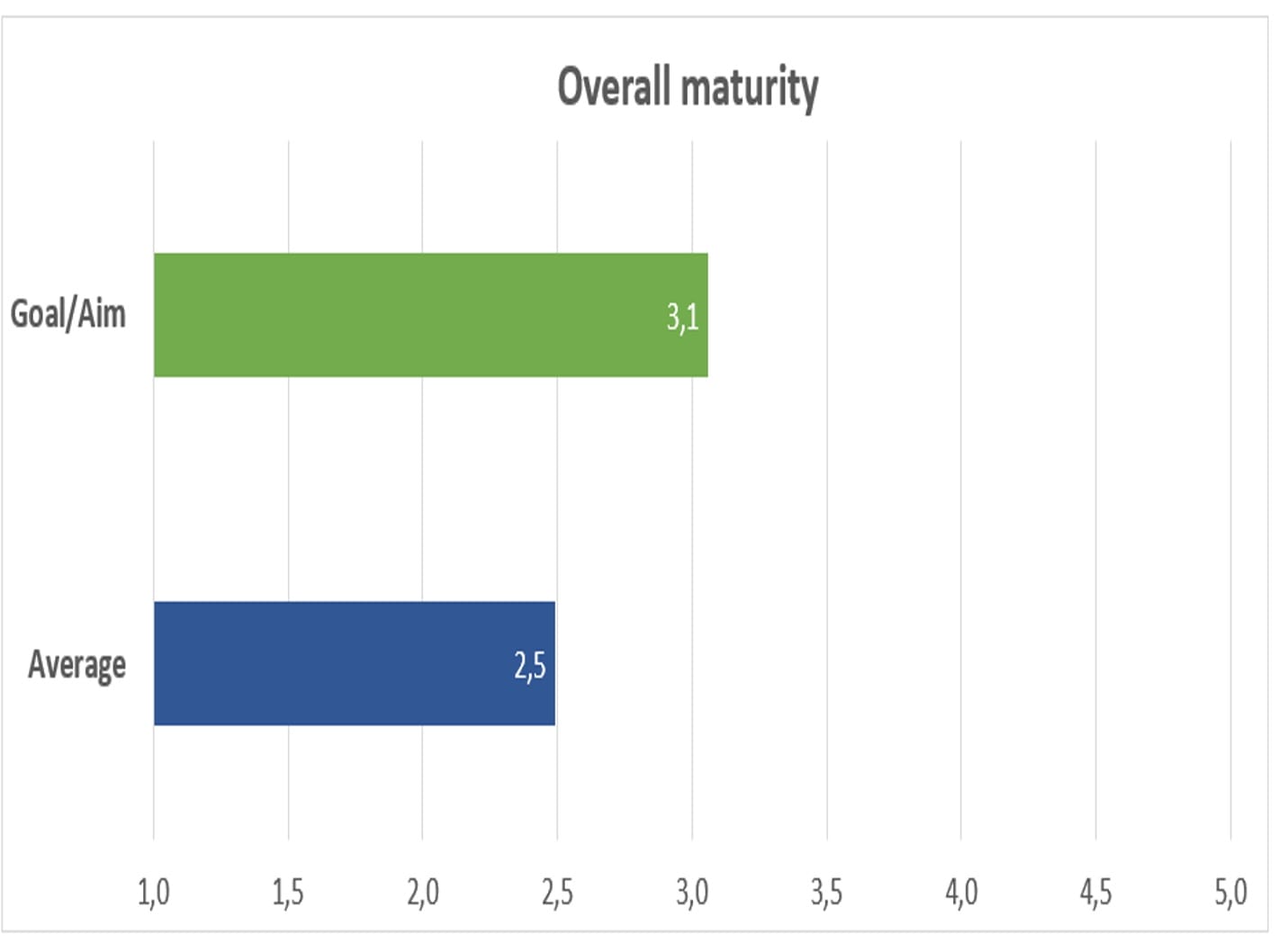
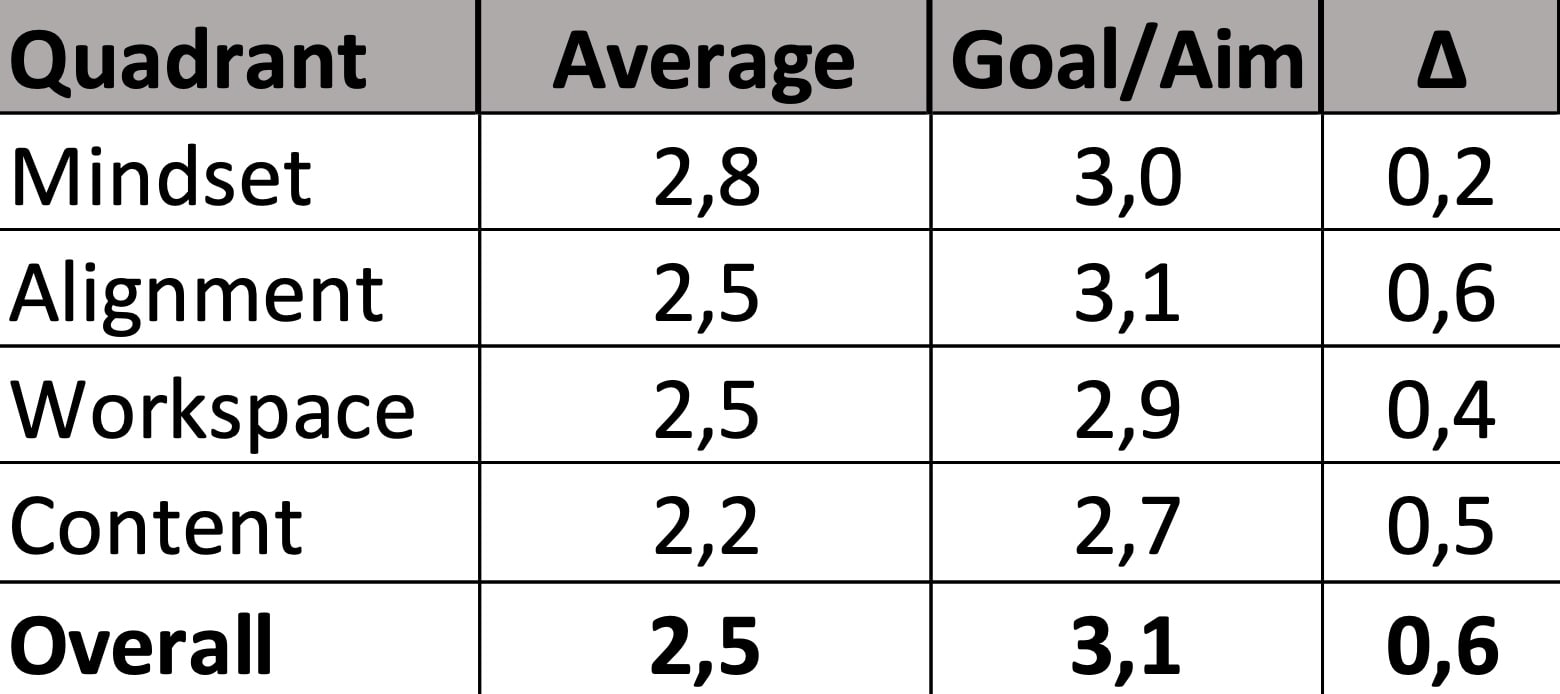
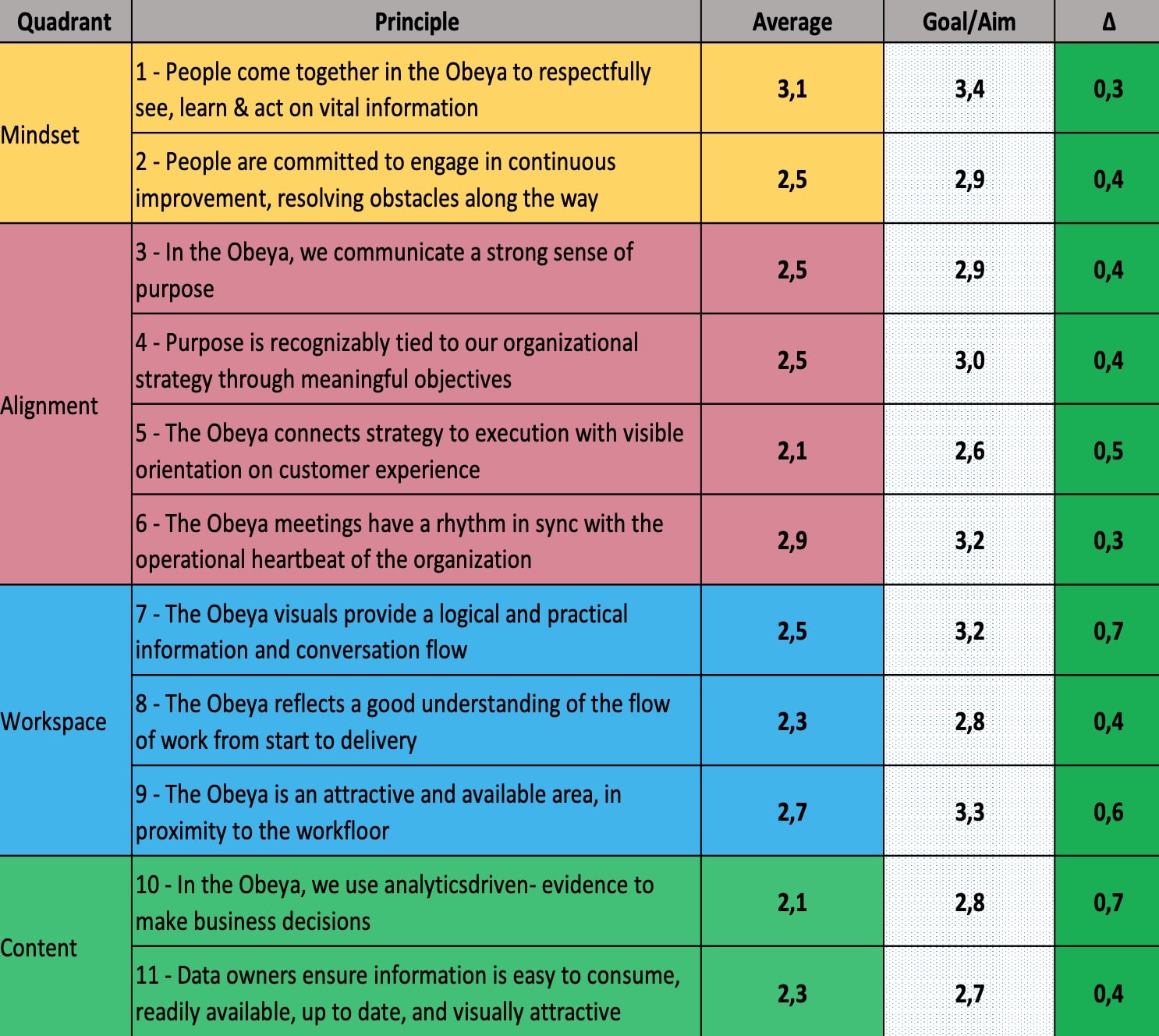
Result context
The results triggered our curiosity even more: what drives the differences in maturity? With 7 cases, we don’t have enough data to draw robust statistical conclusions. We could however do a qualitative analysis with the coaches who performed the maturity assessments, to gain insights.
The questions we asked each of the Obeya Coaches are:
- To what degree is the score correlated to the pre-existing management culture?
- To what degree is the score a reflection of the role maturity of key roles (builder, host, sponsor)
- To what degree is the score a reflection of the Purpose (and thus focus) of the Obeya?
- To what degree is the score a reflection of the initial maturity?
- How strong is the relation between the talents of the Obeya Coach and the maturity score across the four quadrants?
Key insights
Although not statistically valid, the data is suggestive in a particular direction. We cross-referenced the data with our experience and have come to several key insights.
Key insight 1: Does Obeya really change something?
Is Obeya just another ‘management gimmick’, the next new shiny toy to play with? Or does Obeya really bring change?
Our data strongly suggests that Obeya can help to break away from the pre-existing management culture. This break is not a given in any situation, yet our analysis strongly suggests that change can be created. Furthermore, the data suggests that key insight 2 and 3 play a pivotal role: in cases where there was a visible break in culture, this was always accompanied with a strong Obeya Coach and powerful key roles.
The attendants of the Obeya Summit ’23 recognized that it is possible to break away from pre-existing management culture, under conditions. Our research for coming year will cover additional success factors.
Key insight 2: The roles of the Obeya Builders/Hosts
We identified three key roles for continued Obeya maturity growth. The first two roles are well known roles in the Obeya Association framework: the Obeya Builder and the Obeya Host.
Most of the Obeya Coaches who performed the maturity scan saw a strong connection between the Obeya Host and/or Builder maturity and the maturity of the Obeya, with an average correlation of 3.8 on a scale of 1 (no correlation) to 5 (superstrong correlation).
This is a critical insight for Obeya Coaches: time invested in the key roles is time invested in the maturity of the Obeya.
Another key role is the role of the Sponsor. Our research as well as the response from the Summit attendees clearly show that having a powerful sponsor is a strong influence on Obeya success.
Key insight 3: The role of the Obeya Coach
As Obeya Coaches, our talents are unevenly spread across the 11 Obeya principles: some of us excel at visual management, others have talents in organizational alignment, etc. Do these talents influence the maturity growth of an Obeya?
Our data gives a clear answer: yes!
The talents of an Obeya Coach seem to strongly influence Obeya Maturity. As was the case with key insight 2, on average our Obeya Coaches identified the relationship between their talents and the maturity at a 3.8. So it pays to select a coach whose talents match the job to be done.
Attendees to the ’23 Summit seemed to recognize the influence of the Obeya Coach. Here too though there was no unanimity, so we will need to dive deeper into the factors that determine Coach influence.
Key insight 4: What’s the use of an Obeya maturity scan?
The Obeya Purpose is probably the most complex factor we looked into. Whether or not the Purpose drives maturity really depends on the definition of the purpose. It seems to be of influence when it is defined in relation to one of the 11 principles (e.g. to learn or improve collaboration), else it seems to play little to no role. This is something to look into in our research for the coming year.
Key Insight 5: Content & strategic execution
Content is the least mature area in all the scans performed. This triggers two questions.
The first question is why content scores low, since organizations spend a lot of time and money on reporting. Is available information insufficient, or does our view on available information change when starting with Obeya?
The second question relates to principle 5: the Obeya connects strategy to execution with visible orientation on customer experience. This principle scores equally low as the content principles. Is there a relationship between the two? This is something we want to explore in the coming year as well.
Our insight is that the readily available management information is deemed insufficient by organizations starting with Obeya. Thus Obeya is a powerful trigger to increase quality and understanding of key management information.
Key insight 6: What’s the use of an Obeya maturity scan?
We can see you raising your eyebrows while reading insight 3: how strong is the bias in the Obeya Coaches’ assessment when rating the influence of their talents on the Obeya maturity? Well, that is exactly key insight 4: what’s the use of a maturity scan?
We checked with the coaches: how did the scan help them, and which (visible) effects were there because of scanning and reporting?
One of our findings is that Obeya Coaches yearned for a tool that gave them objectivity in their view and assessment of the Obeya. And most find that the scan gave them exactly that: a more objective view. Which in turn helps with many things, from identifying critical interventions to road mapping next steps, to bringing about the urgency to invest in key roles, etc.
Conclusion
We found that the Obeya maturity scan and report do much more than providing the Obeya Coaches with an objective view. The assessments have given teams a sense of pride for their accomplishments. They also helped to secure continued development of the Obeya or even led to a redesign of the governance structure. In short, the assessment leads to insights, pride, urgency, action, and possibly much more!

